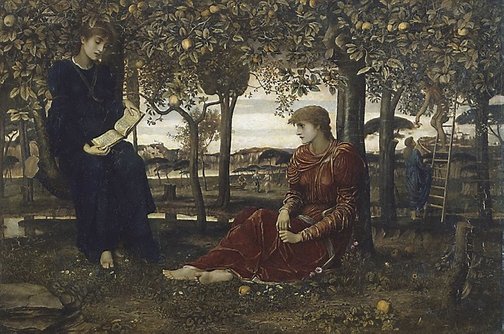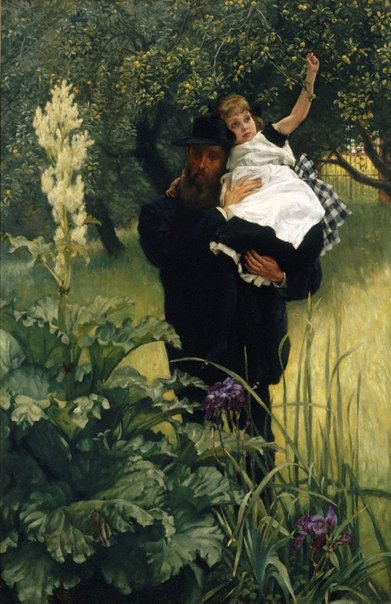3/ Write a short summary of your gallery visit today. Mention 2 or 3 of the paintings that most appealed to you and why.
This week I visited the Art Gallery of NSW. During this visit we looked at art from the Eighteenth Century Enlightenment period, 19th Century Early Australian Romanticism, and the Victorian era. Following this gallery tour, I decided to visit the Royal Botanical Gardens after speaking of landscapes and periods of Romanticism. Although the weather was cold and wet, the gardens were still beautiful and brought on feelings of being at home with nature as mimicked by some of the paintings in the Gallery.
One painting that stood out to me on this visit was John Melhuish Strudwick’s 1883 “A Story Book”, found in The Victorian Hall.

This painting depicts people sitting under a tree with a book with more others in the background picking apples from trees. The image, to me, depicted not only a close relation with nature, but drew out a balance between learning from nature and learning from books. As an education student, this is something I believe is crucial to one’s learning and believe that this is why this image stands out most to me.
Another image that stood out to me was James Tissot’s “the Widower” (1876).

This Victorian paining depicts the man dressed in black with a lost gaze, as if in mourning, while the child is dressed in white and reaching out for nature. The man seems to be holding the girl protectively and the painting gives off an overall feeling of tough times. To me, this painting portrays remedy in nature and a feeling of freedom that can be found amongst it – especially by children.
Images:
https://www.artgallery.nsw.gov.au/collection/works/5847/
https://www.artgallery.nsw.gov.au/collection/works/6697/





